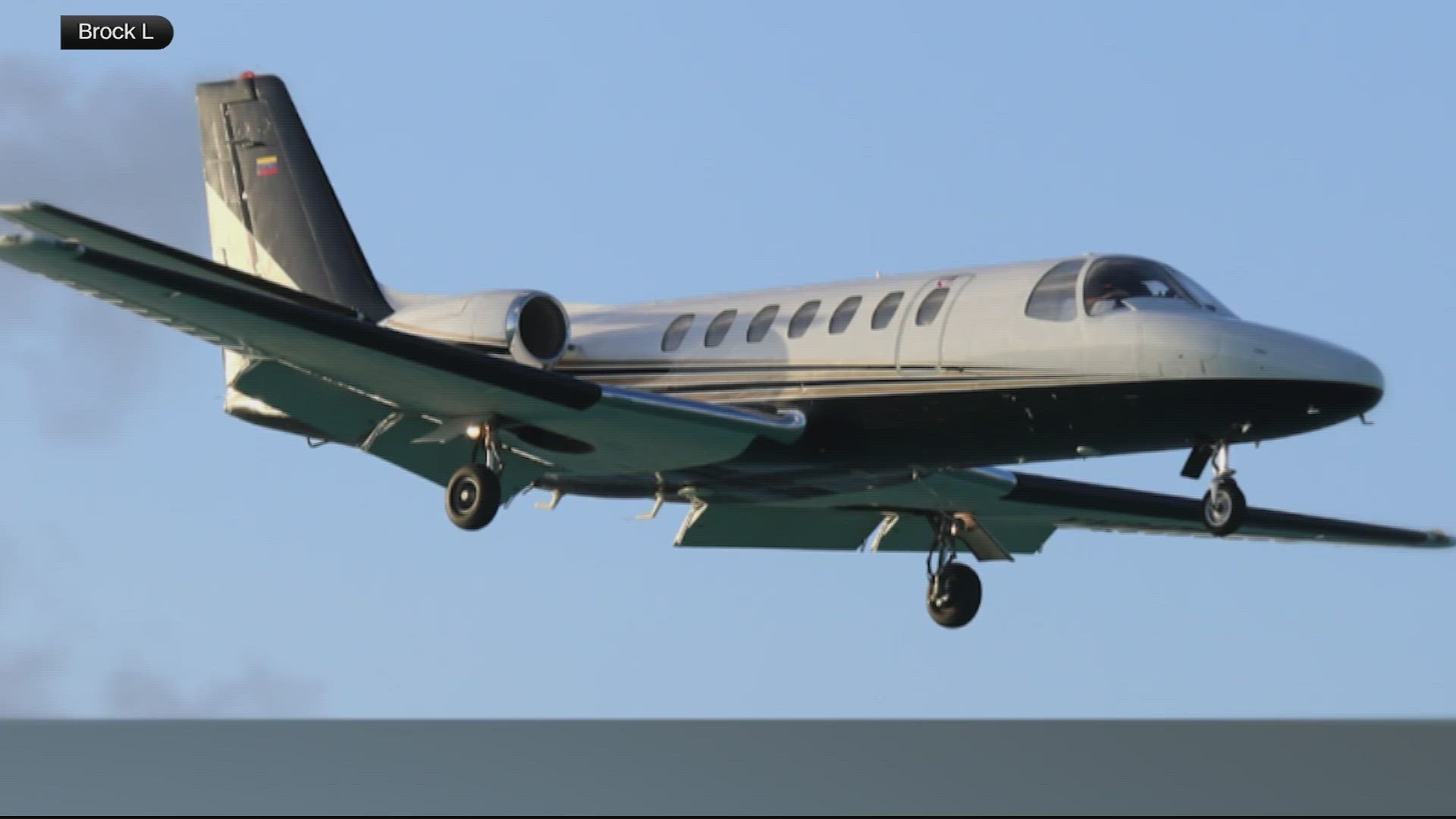WASHINGTON — A crater of wreckage in a hard to reach ridge of rural Virginia mountains is all that remains of a Cessna Citation private jet that caused military jets to scramble at supersonic speeds before crashing and killing the pilot and three passengers on board.
"This is a unique situation that will be a real challenge for the NTSB and the other investigators to analyze," said former NTSB investigator Dr. Alan Diehl who spent more than three decades investigating plane crashes.
Diehl says with so little of the plane left, the best evidence of what happened may be what the intercepting F-16 pilots saw when they pulled alongside the private jet - its pilot, reportedly, slumped over at the controls.
"That tells me, as an aviation human factors investigator, it points towards hypoxia," said Diehl who stressed other factors can't yet be ruled out.
According to flight data, the plane was traveling at 34,000 feet for most of its two hours and 10 minute flight Sunday afternoon out of Elizabethton, Tenn.
Diehl says if the plane lost cabin pressure at that altitude it could have caused the pilot and passengers to black out from a lack of oxygen.
"The onset can be very subtle," the former investigator said. "You can think you are having a headache, but oftentimes pilots become euphoric as they lose low oxygen to the brain."
And without an oxygen mask, it can take just seconds to cause a blackout.
Diehl says the NTSB will consider other possible reasons the pilot was unresponsive, but if the F-16 pilots did not see anyone else in the cockpit he suspects that means the passengers were already unconscious, too.
"You'd think they would have noticed that this pilot was incapacitated and would have tried to either put an oxygen mask on him or at least move him off the controls on the plane," said Diehl who also spent part of his aviation career working on the design of the Cessna Citation.
The pilot of the private jet was not responding to air traffic control when the plane made a U-turn near New York and headed back through restricted air space over D.C.
A flight instructor tells WUSA9 it's possible the autopilot turned the plane back when the pilot failed to land in New York.
Commercial pilot and flight instructor Robert Katz said as a safety precaution pilots will sometimes program their departing airport as their final destination in the autopilot "waypoint stack" sequence to assist in a quick return to the airport if there is trouble on take-off.
That safety command is then deleted when the departure airport is no longer the best option in an emergency. The pilot either forgot to do so, or was already incapacitated and unable to make the change, Katz said.
Katz said if the F-16 intercepting pilots saw frost on the windows of the wayward plane that, too, would be an indication of depressurization. Neither the NTSB nor the Department of Defense has commented on that.
Katz said another point of interest in the investigation may be the plane's "airworthiness date." Typically, he said, that date corresponds to the year a plane was manufactured.
According to public records, the plane that crashed was manufactured in 1990 but it's airworthiness date is Feb. 3, 2023. Katz says that likely means modifications or major repairs were recently made to the plane.
These types of private planes are not required to have black boxes or cockpit voice recorders but, insurance companies often still require them.
The NTSB says so far they have not found those boxes at the crash site but investigators are still searching for them.
Diehl, the former investigator, says if the depressurization was the cause of the crash then the passengers and pilot were likely unconscious before they could have known the plane was in trouble.
"That might be one merciful aspect of what happened," Diehl said.

